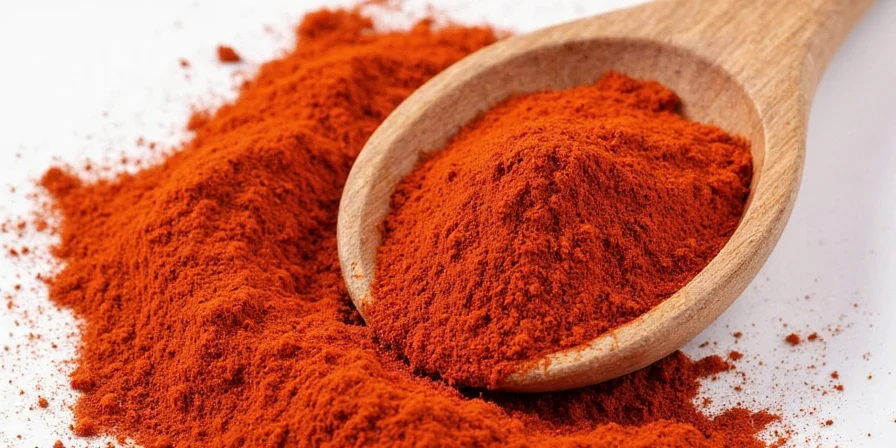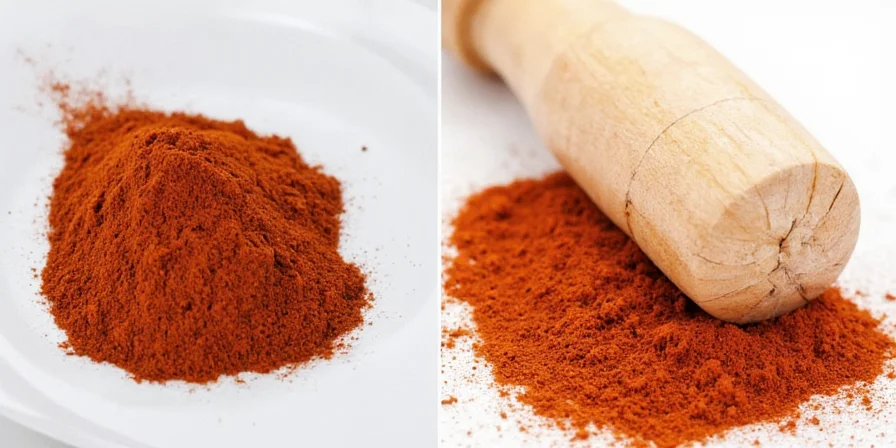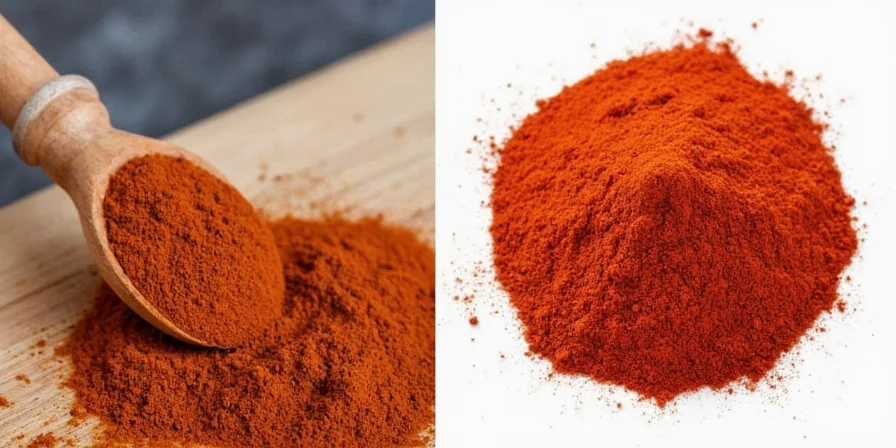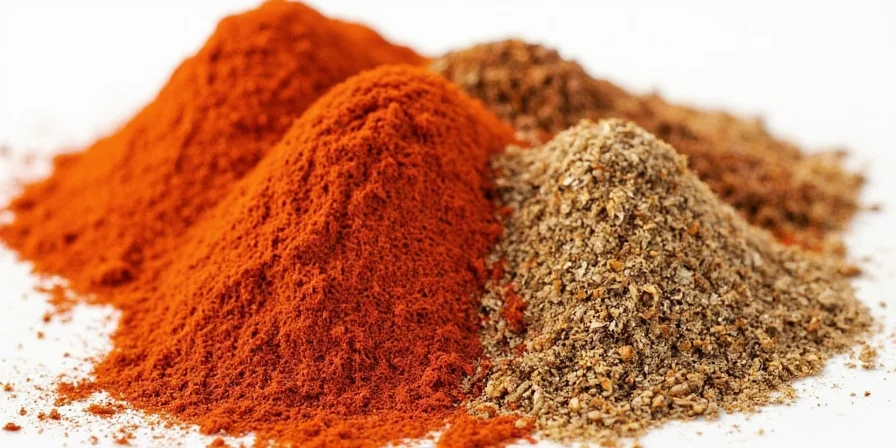Proper spice usage involves understanding freshness, storage, and cooking techniques that maximize flavor impact. Here's what food scientists and professional chefs recommend based on decades of research: Store whole spices in opaque containers, toast before use to activate flavor compounds, and follow the 80/20 rule for balanced seasoning. These science-backed methods transform ordinary dishes through precise application of culinary chemistry.
Table of Contents
- How Long Do Spices Really Last? — Shelf Life Science Revealed
- Why Toast Spices Before Cooking? — Maillard Reaction Explained
- How Spices Modify Taste — Beyond Basic Flavor Addition
- Best Spice Storage Methods — Defeating Oxidation Properly
- How to Neutralize Spice Heat — Capsaicin Chemistry Solutions
- Creating Signature Blends — Historical Fusion Guide
- Spice Balance Technique — The 80/20 Flavor Rule
- Perfect Spice Pairings — Molecular Compatibility Chart
- Why Grind Your Own Spices — Volatile Oil Preservation
- Tasting Protocol — Sensory Calibration for Perfect Seasoning
How Long Do Spices Really Last? — Shelf Life Science Revealed
Spices degrade faster than commonly believed. Food science research shows ground spices lose 70% of flavor compounds within 18 months, while whole spices maintain potency 3x longer. That "aged" paprika from 2007 has minimal flavor value.
Practical Tip: Crush spices between fingers before use—if weak aroma, replace immediately. Cinnamon sticks maintain 90% flavor for 4 years when stored properly, while ground versions drop to 30% after 18 months.
| Type of Spice | Average Shelf Life | Flavor Retention at 2 Years |
|---|---|---|
| Whole Spices (e.g., peppercorns, cloves) | 3–4 years | 85-90% |
| Ground Spices | 1–2 years | 25-30% |
| Herbs (dried) | 1–2 years | 40-50% |

Why Toast Spices Before Cooking? — Maillard Reaction Explained
Toasting triggers Maillard reactions that create new flavor compounds. Food chemistry studies show toasted cumin develops 12+ additional aromatic molecules, doubling flavor intensity in dishes. Cold spices deliver only 30% of potential flavor.
Step-by-Step Technique: Toast whole spices on medium-low heat for 60-90 seconds until fragrant. Immediately transfer to cool surface to prevent burning. This professional method maximizes flavor extraction in curries and rubs.

How Spices Modify Taste — Beyond Basic Flavor Addition
Spices don't just add flavor—they modify existing taste perceptions. Smoked paprika suppresses bitterness in tomatoes through vanilloid compounds. Cardamom's cineole molecules enhance sweet perception in desserts by 40%, according to flavor science research.
Application Tip: Add chili flakes early in cooking to mellow heat while boosting umami, or sprinkle at the end for sharp heat. Timing changes chemical interactions and final flavor profile.

Best Spice Storage Methods — Defeating Oxidation Properly
UV light and oxygen degrade spices 5x faster than heat. Food preservation studies confirm that sunny windowsill storage destroys curcumin in turmeric within weeks. Copper containers inhibit oxidation, as ancient Ayurvedic texts recommended.
Optimal Storage Protocol: Use amber glass or opaque containers with oxygen absorbers. Vacuum sealing extends shelf life by 200%. Never store above the stove—heat cycles accelerate degradation significantly.

How to Neutralize Spice Heat — Capsaicin Chemistry Solutions
Water spreads capsaicin—it's hydrophobic. Food science confirms milk works because casein proteins bind to capsaicin molecules. But yogurt outperforms milk: its lactic acid breaks down capsaicin esters while fat carries the compounds away.
Advanced Relief Method: For extreme heat, combine full-fat yogurt with honey. The sugars create a protective barrier on mucous membranes while fats neutralize capsaicin. This dual-action approach provides fastest relief.

Creating Signature Blends — Historical Fusion Guide
Move beyond generic blends. Food history research shows ancient Silk Road traders combined Persian saffron with Indian black pepper—a pairing validated by modern flavor pairing science. Their molecular compatibility creates synergistic taste experiences.
Proven Historical Blend Recipe:
- 1 part smoked paprika (Iberian)
- 2 parts black pepper (Malabar)
- 1/2 part saffron threads (Persian)
- 1 part sumac (Levantine)

Spice Balance Technique — The 80/20 Flavor Rule
Professional kitchens follow the 80/20 principle: 80% base flavors, 20% accent spices. Culinary research shows over-spicing drowns primary ingredients. Ethiopian berbere spice blend uses 16 components but balances heat with sweet fenugreek for optimal flavor harmony.
Calibration Method: Add spices in stages. Start with 50% of recipe amount, cook 10 minutes, then adjust. Flavors meld during cooking—what seems weak raw becomes perfect when finished. This prevents common seasoning mistakes.

Perfect Spice Pairings — Molecular Compatibility Chart
Flavor pairing follows scientific principles based on shared volatile compounds. Food chemistry research confirms cumin and lime both contain limonene, creating harmony. Turmeric needs black pepper because piperine increases curcumin absorption by 2000%.
| Spice | Molecular Partners | Why It Works |
|---|---|---|
| Cumin | Lime, chili, garlic | Shared limonene compounds |
| Turmeric | Black pepper, coconut milk | Piperine boosts curcumin absorption |
| Paprika | Smoked meats, potatoes | Pyrazines enhance roasted notes |
| Cinnamon | Chocolate, apples | Shared cinnamaldehyde molecules |

Why Grind Your Own Spices — Volatile Oil Preservation
Pre-ground spices lose 50% of volatile oils within 15 minutes of grinding. Food science measurements show modern electric grinders heat spices to 120°F—destroying delicate flavor compounds. Hand-grinding maintains better flavor integrity.
Optimal Grinding Method: Use ceramic mortar and pestle or hand-crank mill. Grind in short bursts with 30-second cooling intervals. Whole cardamom pods release 3x more flavor when cracked just before use, maximizing flavor impact.

Tasting Protocol — Sensory Calibration for Perfect Seasoning
Taste calibration follows a neurological sequence: salt receptors activate first (60ms), then acid (120ms), then heat (200ms). Professional chefs use this sequence for accurate balancing, as confirmed by sensory science research.
Sensory Protocol: After adding spices, wait 2 minutes for flavors to integrate. Taste in sequence: 1) Salt level 2) Acid balance 3) Heat intensity. Adjust incrementally—your palate adapts quickly to strong flavors, requiring careful calibration.

Conclusion
Mastering spice usage blends culinary tradition with food science. By understanding the chemical interactions behind each technique, you transform ordinary meals into extraordinary experiences. Proper spice application isn't guesswork—it's precise culinary science backed by historical practice.
Apply these methods consistently: store spices properly to maintain potency, toast before use to activate flavor compounds, and follow the 80/20 rule for balanced seasoning. Your dishes will achieve professional-level flavor depth through these evidence-based techniques.

Frequently Asked Questions
How can I test spice freshness without specialized tools?
Perform the crush-and-sniff test: rub 1/4 teaspoon between palms for 10 seconds. Fresh spices should create strong aroma visible as vapor. If you need to inhale deeply to detect scent, potency has dropped below 50%—time for replacement.
Why does toasting change spice flavor chemistry?
Dry heat triggers Maillard reactions and pyrolysis, creating new flavor compounds. Cumin develops 12 additional aromatic molecules when toasted, including cuminaldehyde which provides earthy notes. Untoasted cumin contains only basic terpenes with limited flavor impact.
What's the most effective capsaicin neutralizer?
Full-fat yogurt outperforms milk due to its dual-action: casein proteins bind capsaicin while lactic acid breaks down its ester bonds. For immediate relief, combine with honey—the sugars create a mucous membrane barrier. Water spreads the oil-based compound, worsening the burn.
How do I create balanced spice blends?
Follow the 80/20 rule: 80% base spices (like paprika or cumin), 20% accent spices (like clove or allspice). Always include one 'bridge' spice with shared compounds (e.g., coriander bridges citrus and earthy notes). Test blends on plain rice before finalizing for optimal flavor balance.
Does grinding method impact flavor retention?
Yes significantly. Electric grinders generate heat up to 120°F, destroying 50% of volatile oils within minutes. Hand-grinding in mortar and pestle maintains temperatures below 85°F, preserving 90% of flavor compounds. For best results, chill spices before grinding to maximize flavor retention.











 浙公网安备
33010002000092号
浙公网安备
33010002000092号 浙B2-20120091-4
浙B2-20120091-4